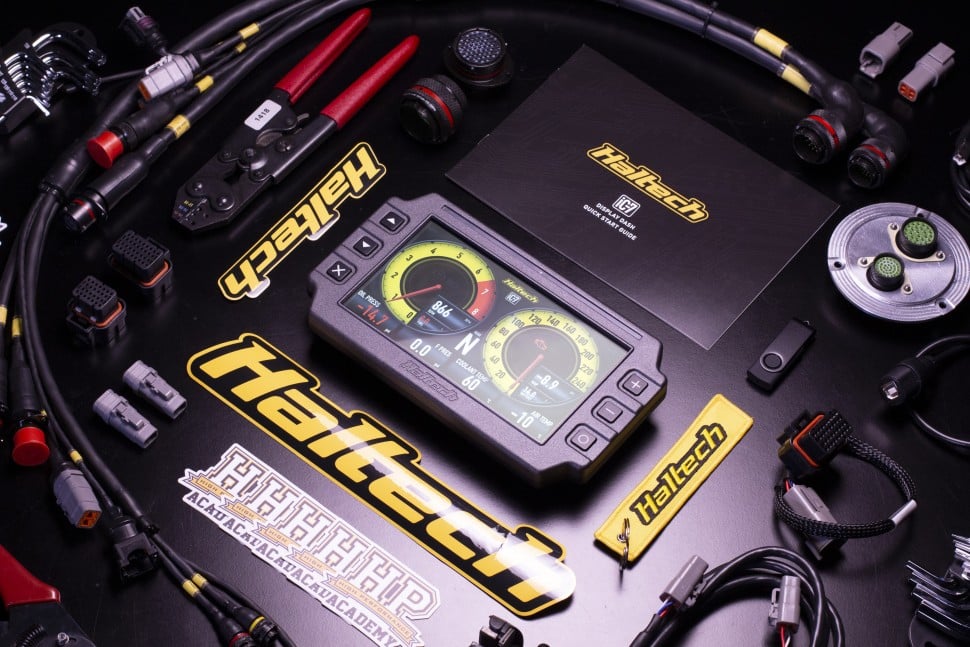| 00:00 |
Now, that we have some understanding of turbulence, let's more closely consider what happens when we interact with the boundary of any surface.
|
| 00:07 |
One important rule in aerodynamics is that any particle on a surface is stationary with respect to that surface.
|
| 00:14 |
This is because intermolecular forces essentially stick this particle onto the surface.
|
| 00:20 |
So, if we imagine we have the flow moving at some speed at a distance from the surface and stationary on the surface, we can see there must be some sort of velocity gradient between these two locations.
|
| 00:32 |
The air moving at velocity is what's referred to as the free stream air.
|
| 00:38 |
And the gradient between the free stream and the static surface is what's referred to as the boundary layer.
|
| 00:44 |
The shape and size of the boundary layer is determined by the shearing forces through the fluid, and as a result of this it's hugely dependent on Reynolds number.
|
| 00:54 |
If we consider the scenario of air blowing over a flat plate, we can think about the evolution of the boundary layer as we move downstream.
|
| 01:03 |
At the start of the plate, we'll have a very thin boundary layer.
|
| 01:06 |
It's of zero thickness when the plate first starts.
|
| 01:09 |
This boundary layer will slowly grow as we move downstream, which is a consequence of the shearing of the fluid slowing the air in the free stream down more and more.
|
| 01:19 |
As we move further and further downstream, we disturb the fluid more, meaning that the Reynolds number is higher, and instabilities within the shearing start to form.
|
| 01:27 |
This is where the boundary layer changes from laminar to turbulent, and this is known as the transition point.
|
| 01:34 |
The transition point can be brought forward with more surface roughness or higher speeds, and this will result in the boundary layer being more turbulent.
|
| 01:42 |
Generally speaking, a laminar boundary layer has low shear, which is good for drag.
|
| 01:47 |
And a turbulent boundary layer has high levels of mixing from the eddies within it, which is good for heat transfer and managing adverse pressure gradients, which we'll discuss a little bit later on.
|
| 01:58 |
The most important things to understand, though, are the existence of the boundary layer and the fact that it will always thicken the further downstream we move.
|
| 02:07 |
We can now consider the scenario of a surface with curvature in free-stream flow.
|
| 02:12 |
Generally speaking, as a result of the fluid particles sitting on the surface of an object and the flow being compressible, flow will tend to follow the shape of the object.
|
| 02:20 |
This is known as the Coanda effect, and it's important because flow follows the shape of an the surface of the object is one of the key ways that we can manipulate the flow and achieve our intent with aerodynamic surfaces.
|
| 02:31 |
Let's summarize what we have learned here.
|
| 02:33 |
When air flows over a surface, the particles on that surface remain stationary due to intermolecular forces, creating a velocity gradient between the moving air and the stationary surface.
|
| 02:44 |
This gradient forms a boundary layer, which grows in thickness as the flow moves downstream, eventually transitioning from laminar to turbulent, depending on factors like surface roughness and speed.
|
| 02:56 |
A laminar boundary layer reduces drag, while a turbulent one improves heat transfer and helps manage adverse pressure gradients.
|
| 03:03 |
The Coanda effect explains how airflow follows the shape of curved surfaces, enabling us to control the aerodynamics.
|





